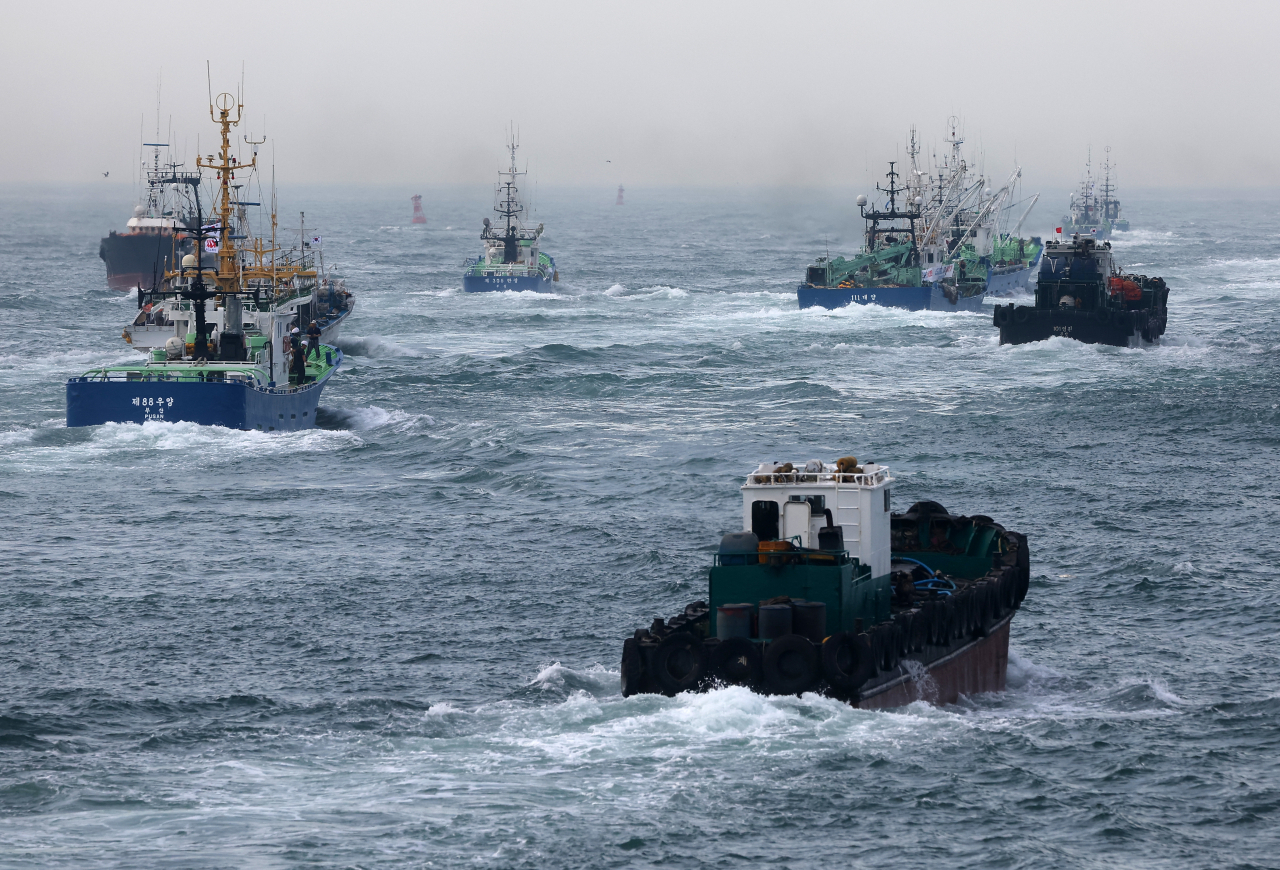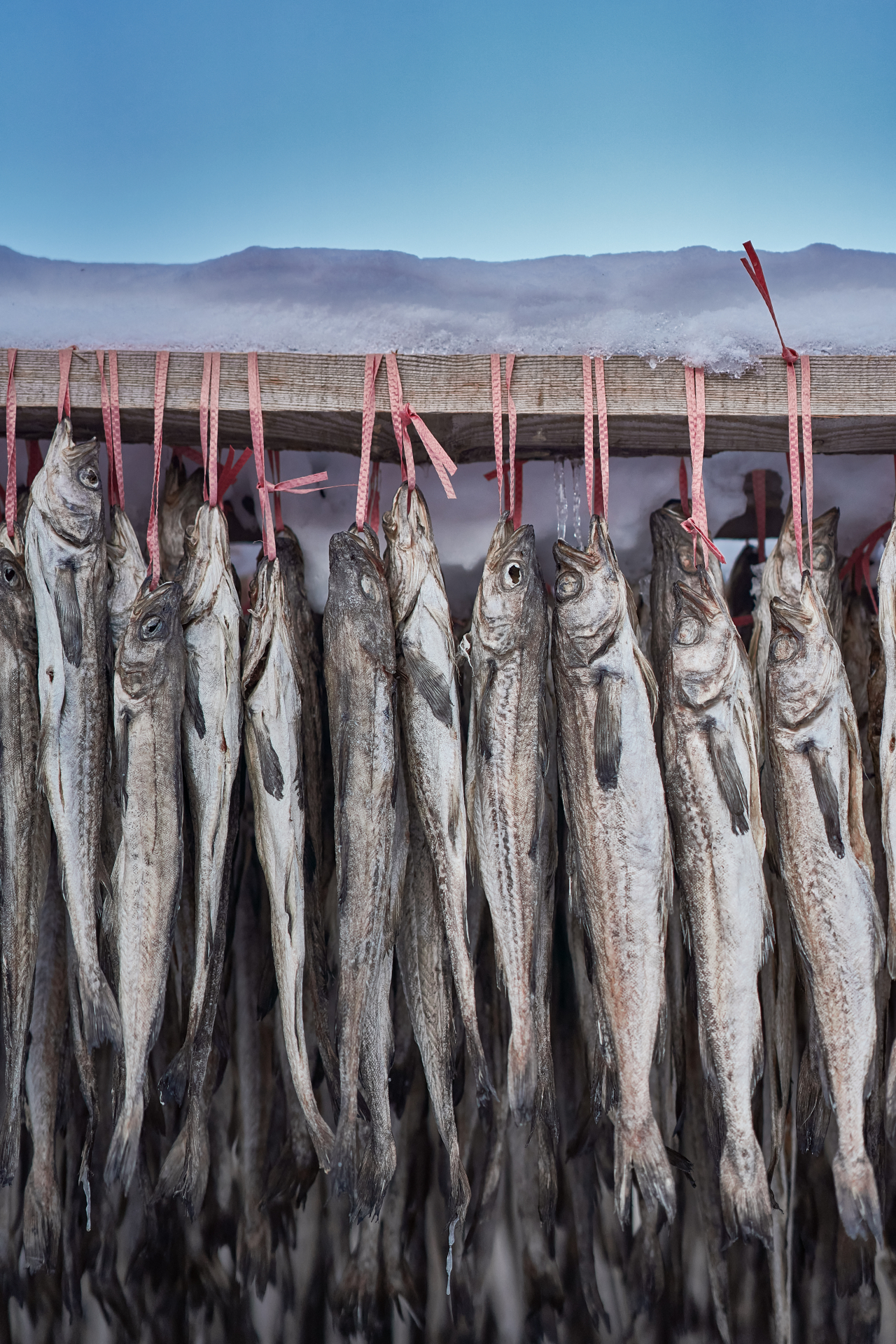[Weekender] A fish with a dozen names
Alaska pollack is a favorite in South Korea for its versatility, but climate change makes it an impossible catch
By Yoon Min-sikPublished : July 29, 2023 - 16:01
The newest snack craze in South Korea is Meoktaekkang.
Convenience stores nationwide are selling out of the fish-flavored snack from local food company Nongshim.
For those who may find it hard to understand what the name means, meoktae is one of the many names that Koreans use to refer to Alaska pollack, which is among the most consumed fish here. The "kkang" derives from Nongshim’s signature snack, the shrimp-flavored Saewookkang.
The fish, whose most widely recognized Korean name would be myeongtae, is prized for its versatility in Korean cuisine, ranging from the boiled soups and stews to roasts and fish jerky. Its roe, when marinated in salt, become a popular culinary ingredient or dish itself, known as myeongnan jeot.

Beloved fish
Depending on the way it is processed, prepared or cooked, or the stage at which it is caught, the fish has different Korean names. Hwangtae, dongtae, saengtae, bukeo, kodari and nogari are some of them.
A straight-up dried myeongtae is called bukeo, while a far lengthier process of repeated freezing and drying of the fish would turn it into hwangtae. Meoktae refers to one that goes through a shorter process of freezing and drying, resulting it being moister than hwangtae.
A frozen myeongtae is called dongtae.
All variations of myeongtae are used in different types of dishes in Korea, mostly in dried-up form. A soup made with dried pollack, or bukeoguk, is the go-to “morning after” soup for those with a hangover.
Nogari, the young pollack, is often served in a dried form that goes well with sauces like gochujang, making a good accompaniment with beer.
As for how myeongtae got its name, the 19th century journal of a Joseon-era official called Lee Yu-won states its origins.
A fisherman surnamed Tae in Myeongcheon-gun of North Hamgyong Province -- currently in North Korea -- caught a fish and gave it to a governor, who asked of its name. Once finding out that it has not been named yet, he suggested that it be called myeongtae, combining the first syllables of the man’s name and his town.
Its popularity spread to the rest of the country and people started calling it bukeo, which means fish from up north.
The abundance of pollack, on top of its versatility, mild flavor, and tender texture, played a crucial role in shaping Koreans' fondness for fish dishes, reflected in it having so many names and diverse culinary variations.
But that was until the 1980s, before the fish started to disappear from the coastal waters of South Korea.
Since 2019, South Korea has banned myeongtae fishing in its waters, a last-ditch effort to help replenish the depleted stock.
While initially a temporary measure, it still stands three years later amid controversy about its effectiveness. Despite the government-led efforts for revival of the fish and its unwavering popularity among the public, myeongtae remain missing from the Korean seas.

Gone from near waters
In the fall of each year, Goseong-gun of Gangwon Province hosts a myeongtae festival as the self-proclaimed “home of myeongtae.” The bitter irony is that the main star of the festival has been absent for years, with the locals hosting the event with Russian pollack.
In 2014, South Korean government launched a 24.8 billion won ($19.4 million) project to replenish the pollack stock in the East Sea, where most of the pollack had been caught in the past.
With extensive efforts centered on mass breeding of pollack, the goal is to release substantial numbers of these fish back into their natural habitat, fostering their resurgence near the Korean Peninsula.
The Ministry of Oceans and Fisheries at that time ambitiously said that home-grown myeongtae will be back on the menu by the year 2020. Three years after its deadline, there is still no home-grown myeongtae.
It was initially thought that excessive fishing of myeongtae, particularly the young ones, was behind the exhaustion of the pollack stock.
Pollack fishing peaked in the 1980s, soaring as high as 160,000 tons a year in 1981, according to the journal published by the Korean Society of Fisheries. The figure plummeted to 8,984 tons by 1995, and eventually to under a ton since 2004.
According to a study by the National Institute of Fisheries Science published in the same journal in 2013, 91 percent of the pollack caught in the East Sea between 1975 and 1997 were categorized as young nogari. Of the 2.12 billion pollack caught in 1981, 1.95 billion were less than two years old.
“Fishermen using trawlers claimed that nogari and myeongtae were different species at the time. While the government knew this was not true, they appear to have turned a blind eye,” wrote Park Jeong-ho, one of lead authors of the study. From 1975 to 1997, the government tallied nogari and “small myeongtae” separately, as if they are different species.
In December of 2015, the Fisheries Ministry released its first patch of the bred pollack to the East Sea, and enacted a four-year ban on pollack fishing for the coastal waters of Goseong-gun.
The ministry projected that mass breeding of pollack would be possible by 2018, and a 2019 version of the state-published middle school Korean textbook touted the success of the myeongtae revival project.
The ministry’s 2021 report showed that the country was still importing 321,586 tons of pollack, 77 percent of which was from Russia. But this year, researchers said they had only been able to catch 17 of the nearly 2 million young pollack that have been released to sea.

Climate change and a tall fight for fish
Recent research say the real culprit may have been climate change, which makes the South Korean effort to bring back the species a lot more daunting.
A 2019 report by the NIFS showed that the water temperature of the East Sea rose by 1.43 degrees Celsius from 1968 to 2018, the higher than any other region around the peninsula.
Professor Cho Yang-ki of Seoul National University’s School of Earth and Environmental Sciences found that rapid increase in the sea surface temperature and changes in current coincided with the dramatic decrease in the number of pollack in the late 1980s.
According to the 2022 study, the environmental changes led to a decrease in the suitable spawning areas in the East Sea, though it also acknowledged that overfishing could have played a role in the number of pollack.
Some experts have said that the entire government project is a failure and should be scrapped altogether. Jung Suk-geun, a professor of marine biology at Jeju National University, wrote in his recent book “Recap of Fisheries Science” that the government should learn from its mistake and change its strategy.
“The myeongtae revival project was based on a faulty diagnosis of why it disappeared from the East Sea. There are no studies to support the myth that overfishing of nogari depleted the myeongtae stock,” he wrote.
He suggested that the government should instead conduct negotiations for Korean fishermen to be able to catch pollack from northern areas, such as near the Sea of Okhotsk. Studies have indicated that pollack and other fish populations are migrating northward in recent years, due to warm winters caused by climate change.
The US National Oceanic and Atmospheric Administration also found in its 2020 study that adult and young pollack are shifting northward due to warmer Arctic temperatures, changing wind patterns and shifting currents.
Despite the debate over its effectiveness, the government’s myeongtae project persists. It plans to breed least 100,000 pollack by the end of December of this year and release them into the East Sea. Whether it is beating a dead horse remains to be seen.
More from Headlines
-
![NewsletterSubscribe
Start your day with a roundup of key stories from The Korea Herald with news and comment on all that’s happening in Korea.
[Robert J. Fouser] After the National Assembly election
1 out 3 Koreans live alone, family types becoming div](//res.heraldm.com/phpwas/restmb_idxmake.php?idx=652&simg=/content/image/2024/04/27/20240427050050_0.jpg&u=20240427115500) NewsletterSubscribe Start your day with a roundup of key stories from The Korea Herald with news and comment on all that’s happening in Korea. [Robert J. Fouser] After the National Assembly election 1 out 3 Koreans live alone, family types becoming div
NewsletterSubscribe Start your day with a roundup of key stories from The Korea Herald with news and comment on all that’s happening in Korea. [Robert J. Fouser] After the National Assembly election 1 out 3 Koreans live alone, family types becoming div -
 Meeting of president, opposition chief set to finally happen
Meeting of president, opposition chief set to finally happen -
 South Korea to launch space security center under spy agency
South Korea to launch space security center under spy agency














![NewsletterSubscribe
Start your day with a roundup of key stories from The Korea Herald with news and comment on all that’s happening in Korea.
[Robert J. Fouser] After the National Assembly election
1 out 3 Koreans live alone, family types becoming div](http://res.heraldm.com/phpwas/restmb_idxmake.php?idx=652&simg=/content/image/2024/04/27/20240427050050_0.jpg&u=20240427115500)




